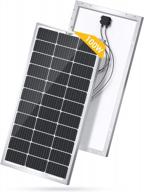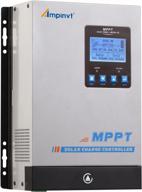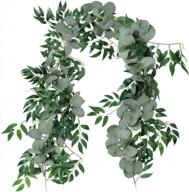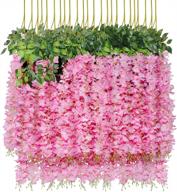
Review on 🪟 Efficient Outside Mount Blinds Curtain Rod Bracket Attachment - NONO Bracket (Set of 3) by Jessie Ritchie

Here's my frustrating installation method and some lessons I learned.
Very well thought out design. Very durable and smooth, shiny surface. Once I figured out how to install them, they were very easy to install. Let me save you some time by explaining the secrets of how they work and my installation method. The brackets don't "jam" in the frame, they "fit" exactly. When you press down on the hook, like hanging curtains on a mounted rod, the front leg rests against the header and the back leg rests against the wall. Your header must be very strong and accurate; It supports both blinds and the entire weight of your shade. Keep that weight in mind. The socket should be very firmly attached to the wall and very close to but not touching the wall, well a little less than 1/8 inch from the wall (2mm). Be prepared for this: the front leg of the mount will rotate (so nasty) when you tighten the screw. Tighten the screw while pressing the side of the bracket firmly against something very hard, such as a desk. B. the floor. You'll quickly see which side to press against this hard surface. Use a vise if you need a #2 Phillips screwdriver, this is a very common size. Remove any decorative items attached to the blinds. notice where it stops. My header was attached to the wall in the middle and about 1 inch from each end. I marked with tape. Slightly loosen the screw so you can move your front leg. Rotate your foot if your head is very thin. Run the bracket down just next to the screw mark on the head. Position the bracket so that it sits on top of the headpiece, the back leg is against the WALL and not the headpiece, and the front leg is pressed against the headpiece as much as possible. You may not be able to get it back as far as you would expect since the "corner" inside the leg is curved rather than at a perfectly right angle. If there is a square gap between the front of the head piece and the bottom of the front leg, allow the back leg to rise slightly and press the BACK LEG FIRMLY against the WALL. When installed properly, your mount will sit flat against the wall, resting on the FRONT of the header and on or ABOVE the back of the header and flat on the front of the header. Carefully remove the UP mount from the headstock without moving the front leg. If it just needs to be moved, don't worry; Mark where it was and guess. Very gently move your front foot back a little, about 1/16 inch or 1mm. Slightly tighten the screw as described in the "Preparing for it” section above. Lower the bracket onto the attachment and check the fit. Adjust this pressure on the front leg until the bracket becomes slightly stiff. Align each bracket, tighten the screws, place on the lintel and insert the eaves into the hooks. Tighten the screws on the hooks to hold the curtain rod in the hooks. What I learned: Brackets are a design limitation that I didn't realize until I installed the cornice. You cannot move curtains further than the end brackets. If your blinds just fit your window, you can't extend the curtains further than the glass! I found that very disappointing. If the screws that attach the dummy collector to the wall aren't very close to the ends of the collector, you probably still want to add brackets to the ends. So if the ends of the blinds are loose, the curtain installation will not be securely fastened either. No need to tighten the screw while the bracket is on the header! The Phillips screw is an M5 metric screw with a 0.8 pitch and you probably won't find a thumbscrew to replace it. You could try replacing it with an inverted screw and wing nut, but the above method solves some very frustrating problems I had with screws about an inch off the ceiling.
- Highly rated by testers for grip and durability
- Not as thick as other picks
New products
Comments (0)
Top products in 🪟 Window Treatment Hardware

BougeRV 9BB 100 Watts Mono Solar Panel,21.9% High Efficiency Half-Cut Cells Monocrystalline Technology Work With 12 Volts Charger For RV Camping Home Boat Marine Off-Grid

27 Review

KAMANINA Bronze 1 Inch Telescoping Curtain Rod - Adjustable From 72 To 144 Inches With Round Finials

28 Review

Extra Thick Heavy Duty Aluminum Flag Pole Kit - WeValor 20FT Sectional In-Ground Flagpole With Free 3X5 Polyester American Flag For Residential Or Commercial Outdoor Use

38 Review

Efficient Solar Charging With 80A MPPT Charge Controller - Ideal For AGM, Sealed & Lithium Batteries

26 Review
Another interesting products

Supla 14 Pcs Artificial Succulents Plants In Bulk Assorted Unpotted Hanging String Of Pearls Cactus Aloe Picks Small Fake Succulents For Wreath Centerpiece Floral Arrangement Indoor Outdoor Home Décor

37 Review

24PCS BigOtters Artificial Lemon Slices - 2 Inch Assorted Colors Fake Fruits For Themed Party Decor, Kitchen Table Centerpiece & Crafts Projects

34 Review

Add A Touch Of Elegance With Windiy'S 5.9' Artificial Willow Vines And Eucalyptus Garland - Perfect For Weddings And Home Decor

34 Review

Pink Artificial Fake Wisteria Vine Rattan Hanging Garland Silk Flowers String Home Party Wedding Decor 43.2 Feet (12 Pack)

41 Review

